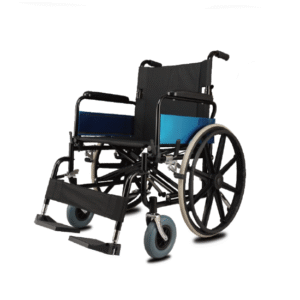Extra Wide Wheelchair: 5 Key Questions Answered—From Width Ranges to User Fit & Accessibility
For users who require more space than standard wheelchairs provide, an extra wide wheelchair isn’t a luxury—it’s a necessity. Designed to accommodate larger body frames or medical needs, these wheelchairs prioritize comfort, safety, and dignity. But what makes a wheelchair “extra wide,” who needs one, and how do they perform in daily life? Here are 5 critical questions answered to guide your decision.
1. What Defines an Extra Wide Wheelchair, and What Widths Do They Offer?
An extra wide wheelchair is distinguished by its seat width, which exceeds the standard 16–18 inches to provide ample space for users with larger builds or mobility limitations. Key specifications include:
- Seat Width Ranges: Most extra wide models start at 20 inches, with options up to 24, 26, or even 30 inches for bariatric users. The overall width (including wheels) typically ranges from 30–40 inches, depending on seat size.
- Frame Design: To support the wider seat, frames are reinforced with thicker steel or aluminum, ensuring stability without excessive weight. Some models feature “offset” wheels (positioned slightly outward) to maintain maneuverability despite the width.
- Difference from Standard Models: A standard wheelchair (26–30 inches overall width) may feel cramped for users with wider hips or those who need to wear braces, while an extra wide design eliminates pressure points and discomfort.
2. Who Needs an Extra Wide Wheelchair?
This design is essential for users whose needs can’t be met by standard sizing:
- Bariatric Users: Individuals with a body mass index (BMI) over 30 often require 20+ inch seats to avoid pressure sores, restricted circulation, or frame damage from overloading.
- Users with Medical Conditions: Edema (swelling), muscular dystrophy, or spinal cord injuries may cause increased body width or require extra space for braces, bandages, or medical devices.
- Those Prioritizing Long-Term Comfort: Even users with moderate builds may benefit if they spend 6+ hours daily in a wheelchair—extra width reduces muscle fatigue and allows for natural movement.
3. Key Features to Look for in an Extra Wide Wheelchair
When shopping, prioritize features that balance width with functionality:
- Weight Capacity: Extra wide models typically support 300–600+ lbs. For example, a 24-inch seat wheelchair may handle 450 lbs, while a 30-inch model can support 600+ lbs. Always choose a capacity 50+ lbs higher than the user’s weight for safety.
- Maneuverability: Look for a turning radius of 36–40 inches (tighter than expected for wider frames) and large rear wheels (24 inches) to ease propulsion. Swivel front casters (6–8 inches) help navigate corners.
- Comfort Add-Ons: Padded seats with memory foam or gel cushions reduce pressure, while adjustable armrests (removable or swing-away) simplify transfers. Recline functions (140°+) are ideal for users who need to shift positions frequently.
- Foldability: While bulkier than standard wheelchairs, some extra wide models fold to 35x25x18 inches for transport—critical for caregivers or users who travel.
4. How Do They Perform in Daily Settings?
Extra wide wheelchairs excel in controlled environments but require planning for tight spaces:
- Home Use: They thrive in spacious homes with 32+ inch doorways and open floor plans. For narrower hallways (28–30 inches), opt for “slim” extra wide models (20–22 inch seats) with a 30-inch overall width.
- Public Spaces: Many modern buildings (hospitals, malls) are accessible with 32+ inch doorways and ramps, but older structures may pose challenges. Calling ahead to venues (e.g., restaurants, theaters) to check accessibility is wise.
- Travel: Vehicle transport requires a wheelchair lift or a van with a wide rear door. Most airlines accept extra wide wheelchairs as checked baggage (no extra fees), but notify the airline 48 hours in advance for assistance.
5. What Are the Challenges and Solutions?
While extra wide wheelchairs solve comfort issues, they come with unique hurdles—easily managed with planning:
- Narrow Doorways: Install swing-away hinges (adding 2–3 inches of clearance) or use a portable ramp to bypass tight entryways.
- Storage: Foldable models tuck into garages or large closets, while wall-mounted lifts save floor space in small homes.
- Caregiver Strain: Lightweight aluminum frames (40–50 lbs) reduce lifting effort, and ergonomic push handles ease maneuvering.
Conclusion: Why the right width matters for long-term comfort and safety
An extra wide wheelchair is a vital tool for users who need more space—combining comfort, safety, and functionality. By understanding width ranges, features, and daily performance, you can choose a model that supports independence and dignity in every setting.
Thank you for reading this, dear, if you have any suggestions about notre site web or want to know about wheelchair, please nous contacter. We will respond quickly.

